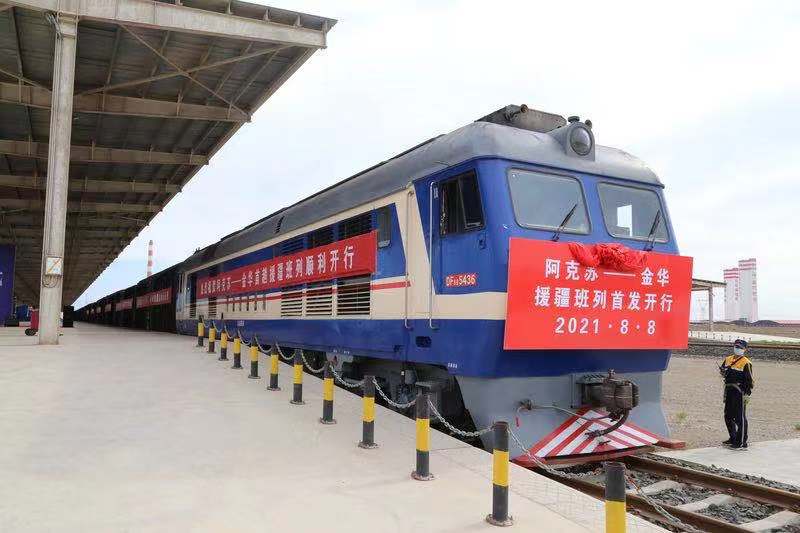A symbolically important freight train loaded with local goods on Aug 8 departed Aksu prefecture – located in remote Northwest China's Xinjiang Uygur autonomous region – bound for Jinhua in East China's Zhejiang province, the Jinhua municipal authorities reported.

A freight train loaded with local specialties departs Aksu prefecture in Xinjiang Uygur autonomous region on Aug 8. [Photo/WeChat account: jhfabu]
The train was the first of a new rail freight service designed to further open up Xinjiang – whose economic growth to date has been hampered by its relatively limited transport infrastructure – by expanding the flow of products to the rest of the country.
Carrying 1,504 tons of local products from Aksu in 47 carriages – worth 60 million yuan ($9.26 million) – the freight train was scheduled to arrive at Jinhua Railway Station after 60 hours.
"Aksu's textile and agricultural products are of good quality. However, there was no direct train to transport these local specialties to China's developed eastern coastal areas," said a Zhejiang government official.
"Most of them are transported sporadically via expressway, which calls for long delivery period and high costs, as well as being affected by natural factors such as the weather and climate," he added.
Located in the central part of Zhejiang province, Jinhua is a national comprehensive transport hub and is developing as an international logistics hub. Meanwhile, Aksu is rich in land and resources, especially good-quality agricultural products, whose access to the lucrative coastal markets are hampered due to its transportation challenges.
The freight train service is expected to enable significantly more products from southern Xinjiang to enter the Yangtze River Delta, shortening the delivery time by at least 36 hours and cutting a third off the costs, without being affected by season and climate.